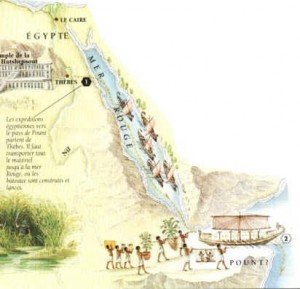By Said M-Shidad Hussein
Why did some Egyptologists go to the extent that they think the Egyptian was originated from the Somali while others view that as a strange idea? Naturally an answer for that kind of question should principally lay with investigating the background of the Somali language by a relevant linguistic comparison. In this section we are going to take one more step beyond the Cushitic scope for exploring the linguistic nature of the Somali as an Afroasiatic language by comparing it with the Egyptian and the Arabic as analytical tool for its historical or geographical background.
 There may be a concern about the extent to which the comparison can be a relevant because the Somali will only be compared to the Egyptian and the Arabic. These two languages, however, have a particular relevance for understanding the ancient history of Somalia due to the geographical location and historical dimensions of the country, and their first inclusion in the linguistic comparisons on the region with their apparent, unique contribution to that respect. But before I proceed for an assessment, let me first note about sound-symbols of some Phonemes that have no speech sounds in English but shared by these three languages.
There may be a concern about the extent to which the comparison can be a relevant because the Somali will only be compared to the Egyptian and the Arabic. These two languages, however, have a particular relevance for understanding the ancient history of Somalia due to the geographical location and historical dimensions of the country, and their first inclusion in the linguistic comparisons on the region with their apparent, unique contribution to that respect. But before I proceed for an assessment, let me first note about sound-symbols of some Phonemes that have no speech sounds in English but shared by these three languages.
Orthography
As is well known, the languages in question, Somali, Arabic, and Egyptian have hard velars: kh خ, gh غ, and pharyngeals (emphatics): ḥ ح, ’a .ع We also know that the orthography of these phonemes is not internationally standardized. In this work, I adopted the Somali version of their phonetic symbols such as kh for خ (as in “Khartoum”); x for ḥ (as in Xassan or Baxrain, instead of Ḥassan or Baḥrain); and c for ’a or simply a (as in Ciraq or Carab, instead of Iraq or Arab).
{As we shall discuss in part B, there are also around six other Arabic or Proto-Afroasiatic phonemes with unconventional symbols such as: t (ط), zh (ﻆ ), ḋ (ذ), th (ث), ś (ص), đ (ﺽ)}.
As I have noted on another document,[i] Somalis do not start adopting x for ḥ; Romans did it; and likewise for c, some scholars on Islam have accepted it for ’a. The Somali, and these two other languages, are among very few languages around the world that have retained these kinds of Phonetics, particularly the emphatics.
Searching the Age of the Somali Language
A) The Somali and the Egyptian
The early linguistic or anthropological Egyptologists found that the Egyptian, as an Afroasiatic language, closely relates to the Eastern Cushitic to which the Somali belongs. They have further suggested, “That Egyptian was a Semitcized Cushitic language, connecting it with or even deriving it from Somali.”[i] However an adequate study for proving or disproving this idea has never been conducted. Additionally, some Somali and Egyptian contemporary historians have occasionally been surprised with the existence of similar Somalo-Egyptian lexemes.[ii] But these findings are not utilized by the later western scholars on Egyptian or Somali studies. The following comparison can strongly validate that old Egyptologists’ view on the Somolo-Egyptian connection. Since the details of the linguistic aspects in the Egyptian other than the Phonology and some lexemes are not adequately known,[iii] in this work we are confining the comparison to the lexical and phonological correspondents.
Phonetic Similarities
Although we shall reconstruct the original Somali phonemes in part ‘B’, we are going to compare the middle Egyptian to the modern Somali. The middle Egyptian which was approximately used from late third millennium to late second millennium BCE is the standard Egyptian used today for the researches. Orthographically, there is little known difference between the old and the middle Egyptian.[iv]
Read more:The Land of Punt – VII
Said M-Shidad Hussein
Garowe, Somalia
Email: [email protected]
We welcome the submission of all articles for possible publication on WardheerNews.com. WardheerNews will only consider articles sent exclusively. Please email your article today . Opinions expressed in this article are those of the author and do not necessarily reflect the views of WardheerNews.
WardheerNew’s tolerance platform is engaging with diversity of opinion, political ideology and self-expression. Tolerance is a necessary ingredient for creativity and civility.Tolerance fuels tenacity and audacity.
WardheerNews waxay tixgelin gaara siinaysaa maqaaladaha sida gaarka ah loogu soo diro ee aan lagu daabicin goobo kale. Maqaalkani wuxuu ka turjumayaa aragtida Qoraaga loomana fasiran karo tan WardheerNews.
Copyright © 2024 WardheerNews, All rights reserved


